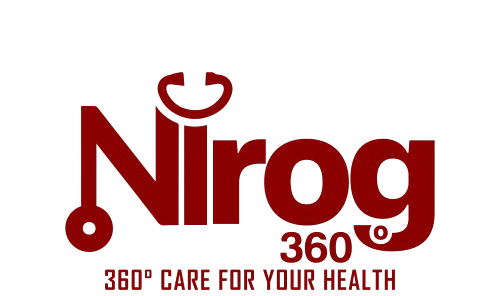November 22, 2025
overview
What's hormonal acne?
Hormonal acne is acne that’s caused by change, especially of androgens- hormones similar as testosterone. These hormones stimulate the skin’s oil painting product. When this redundant oil painting mixes with dead skin cells and bacteria, the pores of your skin come clogged and lit .
Simple Pathophysiology
- Hormone situations increase
- Oil painting (sebum) glands come hyperactive
- Pores clog with oil painting dead skin.
- Bacteria grows → inflammation
- Results: painful pustules, excrescences, blackheads, papules
- Hormonal acne is generally deep, cystic, painful, and can be anticipated at some times, like premenstrual time, during ovulation, puberty, or occurrences of stress
Common Patterns Jawline, Chin & Lower Face
The main locales of hormonal acne are set up because there are thick oil-painting glands with largely active hormone receptors.
Most common locales
- Jawline
- Chin
- Lower cheeks
- Neck
- Back & casket( severe cases)
Why these locales?
These areas have further hormone-sensitive oil painting glands that explosively reply to hormonal oscillation
Changes to the menstrual cycle
- PCOS
- Stress-related cortisol oscillations
- High situations of androgens
- Dirty mobile phones touching the face
- Tight helmets masks Still, it’s also surely a sign of a hormonal imbalance if you have recurring acne on the jawline.
Causes & threat Factors of Hormonal Acne
The roots of hormonal acne could be several internal and external causes.
1. Puberty
Teens suffer a natural increase in androgens, leading to an increase in oil painting. This is why teen boys and girls have acne rout.
2. Menstrual cycle
Acne is seen by numerous women about 7 – 10 days before the onset of ages due to changes in estrogen and progesterone.
3. PCOS( Polycystic Ovary Pattern)
PCOS elevates androgen situations, leading to a number of signs and symptoms, similar as
Severe acne along the jawline
unctuous skin
Facial hair
Irregular ages
Acne caused by PCOS generally needs treatments that involve hormones.
4. Hormonal oscillations during gestation or postpartum
Women may get flights during
First trimester
Post-delivery
Hormonal changes of suckling
5. Stress
Stress increases cortisol, which activates oil painting glands → flights.
6. specifics(Some specifics that can beget acne)
Steroids
Supplementing testosterone
Lithium
Certain birth control capsules( rare)
7. Diet
Studies have suggested high input of
Dairy
Sugar
High-glycaemic foods (pasta, white rice, sweets)
can aggravate hormonal acne.
8. Genetics
Still, also, children may also have more serious skin problems if parents had acne.
How Hormonal Acne Differs From Other Types
point Hormonal Acne Regular Acne
Location Jowl line, chin, lower face Forehead, nose, cheeks
Timing bettered during cycles stress Random
Type of lesion Excrescences, nodes, deep pustules Blackheads, papules
Rush High Moderate
Pain frequently painful, generally mild
Beget hormonal imbalance, congested pores, dirt
In general, hormonal acne also tends to be deeper and more persistent and requires medical treatments plus hormonal remedies, rather than just simple skincare.
Stylish Medical Treatments for Hormonal Acne
A dermatologist tailors your treatment grounded on inflexibility. Then there are some of the most effective options
1) Topical Treatments
a) Retinoids (Adapalene, Tretinoin)
Increase cell development
Avoiding congested pores
Reduce inflammation
Side effects include blankness and vexation (improves in 2–4 weeks)
b) Benzoyl Peroxide
Kills bacteria that beget acne.
Reduces inflammation
Good for teens with seditious acne
c) Salicylic Acid
Unclogs pores
Regulates oil painting product
frequently used in cleaners and chemical peels.
d) Azelaic Acid
Mild. Suitable for sensitive skin.
Reduces saturation from acne
2 .Oral Medicines
a) Oral Contraceptives( Birth Control Pills)
Regulate hormones in women with menstrual acne or PCOS-related acne.
b) Anti-androgens (spironolactone)
Reduces situations of androgen → reduces oil painting product.
veritably effective for adult women with jawline acne.
c) Antibiotics: Doxycycline, Minocycline
habituated short- term to control inflammation.
d) Isotretinoin (Accutane)
For severe cystic hormonal acne.
Shrinks oil painting glands permanently.
In Clinic Treatments at Nirog360°
Expert dermatologists at Nirog360 ° offer advanced treatment options for stubborn hormonal acne.
1) Chemical Peels
- Salicylic acid peel
- Glycolic acid peel
- Combination peels
These help reduce oil painting, open pores, and fade dark spots.
2) Ray Treatments
- Ray remedy reduces inflammation and kills bacteria.
- Useful for acne scars and active acne.
- 3) PRP (Platelet-Rich Tube) for Acne Scars
- Promotes collagen rejuvenescence and smoothens textured skin.
- 4)Medically Supervised Skincare Plans
- tailored skincare routines for
- Hormonal acne
- PCOS acne
- Acne in adult ladies
- Teen acne
Clinic CTA
For expert evaluation and substantiated hormonal acne treatment, book a discussion at Nirog360°.
Call 9266231003 or visit our online booking runner.
Skincare Routine & At-Home Measures .
A good routine supports medical treatment and prevents new flights.
Morning Routine
✔ Gentle salicylic acid or raging cleaner
✔Non-comedogenic moisturizer
✔ Sunscreen( SPF 30)
Night Routine
✔ Gel-grounded cleaner
✔ Retinoid (traditional strength)
✔ oil painting-free moisturizer
Lifestyle Tips
Wash pillowcases twice a week
Avoid touching face
Do not squeeze pustules.
Use non-comedogenic makeup.
Reduce stress with sleep & exercise.
Diet & Lifestyle Foods That Help vs. Harm
- Foods that can complicate hormonal acne
Dairy (skimmed milk especially)
Sugar
Fried foods
Chocolates (milk chocolate)
White chuck , white rice (high GI)
- Foods that help
Omega-3-rich foods (fish, flaxseed)
Green vegetables
Whole grains
Berries
Water input: 2–3 litres/day
When to See a Dermatologist
- See a dermatologist if
Acne that’s painful or cystic
Pustules on the jawline keep coming back each month.
OTC products are n’t working
You suspect PCOS
Acne is affecting your confidence.
You have dark spots or scars
The dermatologists at Nirog 360° are specialists in managing hormonal acne and do so in a manner to ensure long-lasting results.
